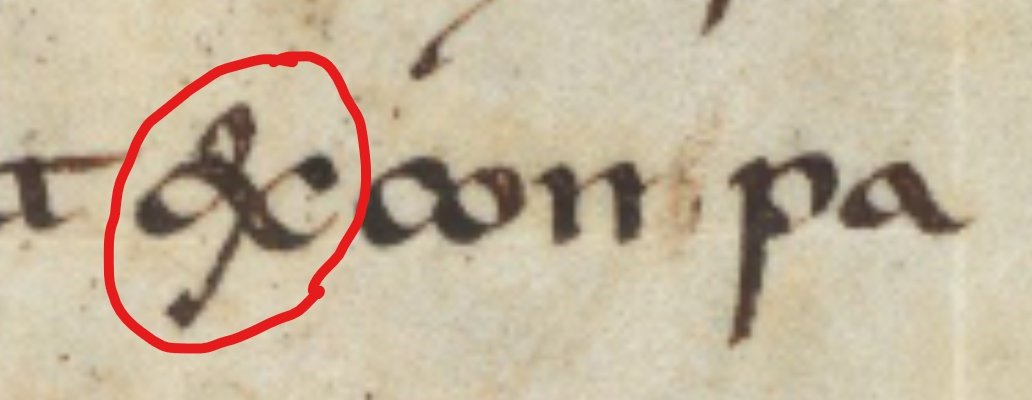
Check it out, folks, VCEditor now lets me show reconstructed formerly-conjoint bifolia of the fragmentary Beauvais Missal! SO COOL!
https://twitter.com/leoba/status/1503757248228691971
For example, here's a quire from August of the Sanctorale section. I've found 5 of the original 8 leaves of the quire, including two formerly-conjoint bifolia (in bright green): 

Using the new feature, I can actually see the reconstructed outer bifolium of the quire! Here's the outer side, showing the catchwords on the final verso (left) and the conjoint first recto (right): 

This is a really important feature for fragmentological reconstructions. When #OttoEge dismembered a manuscript, he actually took it apart carefully: snipping the threads in the center of each quire and lifting out each bifolium. The last step was to "split the atom," as it were,
...by cutting each bifolium in half. VCEditor allows me to not only reconstruct the manuscript leaves in sequence but to actually reverse that last step by visualizing the conjoints! These two leaves (in Toronto & Buffalo) haven't seen each other since they were divided in 1942! 

Check it out here: vceditor.library.upenn.edu/project/61706e…
Also, I've now added a direct link to VCEditor from my @FragmentariumMS reconstruction: fragmentarium.ms/overview/F-4ihz 

FINALLY, if you want to learn how to do all this and more (paleography, liturgiology, codicology, and all of the delights that make up the discipline of #fragmentology), apply for my Fragmentology course @rarebookschool this summer! rarebookschool.org/courses/manusc…
• • •
Missing some Tweet in this thread? You can try to
force a refresh


















